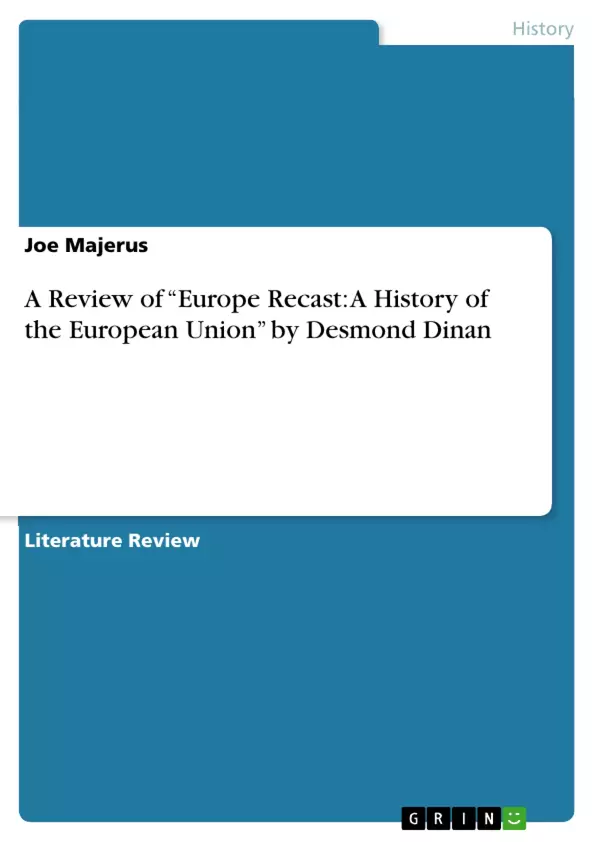A critical and comprehensive review of Desmond Dinan's book on the history of the European integration process.
Inhaltsverzeichnis (Table of Contents)
- Introduction: The Concept of European Integration
- From Post-War Recovery to the Creation of the ECSC
- The European Economic Community: Towards a Single Market (1957-1973)
- Stagnation, Restructuring and Enlargement (1973-1985)
- The Single European Act and the Completion of the Single Market
- The Maastricht Treaty: From European Community to European Union
- Enlargement to Central and Eastern Europe
- Towards a European Constitution and the Future of the European Union
Zielsetzung und Themenschwerpunkte (Objectives and Key Themes)
Desmond Dinan's "Europe Recast: A History of the European Union" provides a comprehensive overview of the integration process of the European Union from its roots in post-war Europe to the early 21st century. The book aims to highlight the complex interplay of historical, political, and economic factors that shaped the development of the European Union.
- The evolution of European integration from post-war recovery to the establishment of the European Union
- The dynamic interplay between national interests and supra-national aspirations in shaping the EU's development
- The role of key figures and institutions in driving the integration process
- The impact of major historical events, including the oil crises and the Cold War, on European integration
- The challenges and successes of the European Union in achieving its goals
Zusammenfassung der Kapitel (Chapter Summaries)
The book begins by outlining the historical roots of European integration, emphasizing the post-war need for cooperation and the emergence of competing visions for European unity. It then explores the early years of the European Coal and Steel Community (ECSC), highlighting its limited economic impact but significant political achievements.
The following chapters delve into the creation and evolution of the European Economic Community (EEC), analyzing the role of the Rome Treaty, the challenges of agricultural policy, and the "Empty Chair Crisis." Dinan then examines the period of stagnation and restructuring in the 1970s and 1980s, highlighting the impact of the oil crises and the rise of inter-governmentalism. He then focuses on the Single European Act and its impact on the completion of the single market, emphasizing the role of Jacques Delors and the importance of supra-nationalism.
The final chapters cover the Maastricht Treaty and its implications for the establishment of the European Union, the challenges and successes of enlargement to central and eastern Europe, and the long road towards a European constitution.
Schlüsselwörter (Keywords)
The book delves into key concepts and themes related to the European Union, such as European integration, supra-nationalism, inter-governmentalism, national interests, economic integration, political cooperation, institutional reforms, and the influence of key individuals and institutions. It further explores historical events like the oil crises and the Cold War, as well as the challenges and successes of the EU in achieving its goals.
- Quote paper
- Joe Majerus (Author), 2010, A Review of “Europe Recast: A History of the European Union” by Desmond Dinan, Munich, GRIN Verlag, https://www.hausarbeiten.de/document/202288


